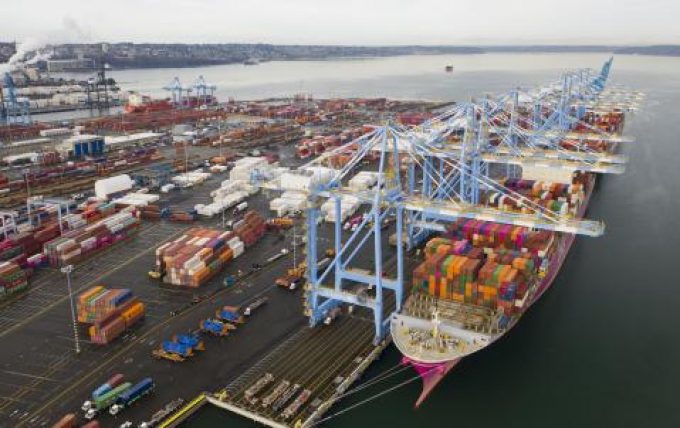How a US government shutdown could affect the logistics industry
As the prospect of a federal shutdown in the US becomes increasingly likely, with the ...

PRESS RELEASE
Tacoma, WA — The Northwest Seaport Alliance (NWSA) has been selected to receive $54 million in grant funding from the 2023 Port Infrastructure Development Program (PIDP). The funding will support the expansion of Husky Terminal in our South Harbor, further increasing the NWSA gateway’s global competitiveness and regional job opportunities.
“The Northwest Seaport Alliance is proud to receive grant funds from MARAD’s 2023 Port Infrastructure Development Program and thanks MARAD and the U.S. Department of Transportation for this award,” stated Commissioner Deanna Keller, Port of Tacoma Commission President and Co-Chair with The Northwest Seaport Alliance. “The award will launch a series of critical improvements at Husky Terminal in our South Harbor that will further enhance our gateway’s global competitiveness. By densifying the terminal and expanding its refrigerated cargo capacity, we will be able to improve service for importers and help agricultural exporters move more cargo to international markets.”
The expansion project is designed to advance the safety, efficiency, and reliability of cargo movement, all while supporting the gateway’s environmental goals. The expansions project is multifaceted, including several key components:
Importantly, the terminal expansion project also aligns with the NWSA gateway’s commitment to zero maritime emissions by 2050 or earlier as outlined in the Northwest Ports Clean Air Strategy (NWPCAS). The project’s improvements in cargo handling efficiency, cargo storage, and reefer capacity powered by the renewable energy grid are crucial to realizing these environmental milestones.
“We want to thank our Washington State Congressional Delegation who supported this project and recognize the important role The Northwest Seaport Alliance plays in promoting economic vitality across our state,” stated Commissioner Sam Cho, Port of Seattle Commission President and Co-Chair with The Northwest Seaport Alliance. “In addition to creating more job opportunities in our region, the Port Infrastructure Development Program grant will provide environmental benefits and support our efforts towards zero maritime emissions. These improvements will increase the efficiency of cargo operations, reduce truck turn times, and shorten vessel stays while at berth which all reduce carbon emissions that impact near-port residents in our South Harbor.”
The NWSA has been proactively planning and developing strategic facility improvements to remain competitive in the changing global shipping industry. NWSA has worked with its tenants, including Husky Terminal, to make major capital improvements to marine terminal facilities, that enable the facilities to meet the demand of larger scale vessels and the consolidation in cargo vessel deployment routes.
This expansion project further builds upon the NWSA’s previous investment in the modernization of Husky Terminal that reconfigured the wharf and enhanced the terminal’s capacity to handle larger ships with eight super post-panamax cranes.
NWSA’s receipt of this grant represents a significant step toward ensuring the port’s ability to handle the evolving demands of global trade, enhancing its commitment to environmental sustainability, and solidifying its position as a leading hub for agricultural trade in the North America.
Comment on this article